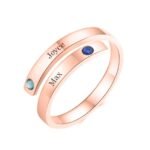Feng Shui, which translates to “wind” (风) and “water” (水), is an ancient Chinese practice that aims to harmonize individuals with their surrounding environment. Rooted in Taoist principles, Feng Shui is based on the belief that the energy, or “Chi” (气), that flows through everything in the universe can be shaped to enhance well-being, prosperity, and balance. By arranging objects, buildings, and spaces in a way that promotes positive energy flow, Feng Shui helps individuals live more harmoniously with nature and their surroundings.
The Core Principles of Feng Shui
- Chi (气)
Chi is the vital energy that flows through every aspect of life, from our homes to our bodies. Feng Shui seeks to cultivate positive chi, allowing it to flow freely and avoid blockages that can result in negative energy or “Sha Chi.” When chi is flowing harmoniously, it is believed to bring health, happiness, and prosperity.
- Yin and Yang (阴阳)
Yin and Yang represent the balance of opposing forces in the universe, such as light and dark, feminine and masculine, or passive and active. In Feng Shui, creating balance between Yin and Yang energies is essential for achieving harmony in any space. Too much Yin energy can lead to lethargy, while too much Yang energy can create restlessness. The key is to maintain a dynamic balance that promotes well-being.
- The Five Elements (五行)
The Five Elements—Wood (木), Fire (火), Earth (土), Metal (金), and Water (水)—are central to Feng Shui and represent different aspects of nature and life. Each element corresponds to specific qualities and can either support or weaken other elements. For example:
- Wood represents growth, creativity, and vitality.
- Fire symbolizes passion, energy, and transformation.
- Earth is associated with stability, balance, and nurturing.
- Metal stands for clarity, strength, and focus.
- Water is connected to wisdom, calm, and abundance.
Feng Shui practitioners use these elements to create balance and flow in a space by incorporating objects, colors, and materials that correspond to each element.
- The Bagua Map (八卦图)
The Bagua Map is a Feng Shui tool used to map out the energy areas of a home or space. The map is divided into nine sectors, each representing different aspects of life, such as wealth, relationships, health, and career. By aligning these sectors with specific areas of a room or building, one can enhance the energy in those areas. For example, placing objects associated with wealth (like plants or water features) in the wealth corner of a room is believed to attract prosperity.

 Mothers Day Gifts
Mothers Day Gifts Fathers Day Gifts
Fathers Day Gifts Halloween Gifts
Halloween Gifts Thanksgiving Day Gifts
Thanksgiving Day Gifts Christmas gifts
Christmas gifts Easter Day Gifts
Easter Day Gifts Gifts for Her
Gifts for Her Gifts for him
Gifts for him Gift for Relationship
Gift for Relationship Gift for Pets
Gift for Pets Anniversary
Anniversary Birthday
Birthday Christmas
Christmas Halloween
Halloween Retirement
Retirement Party
Party Valentine’s Day
Valentine’s Day Wedding
Wedding Gift for Relationship
Gift for Relationship